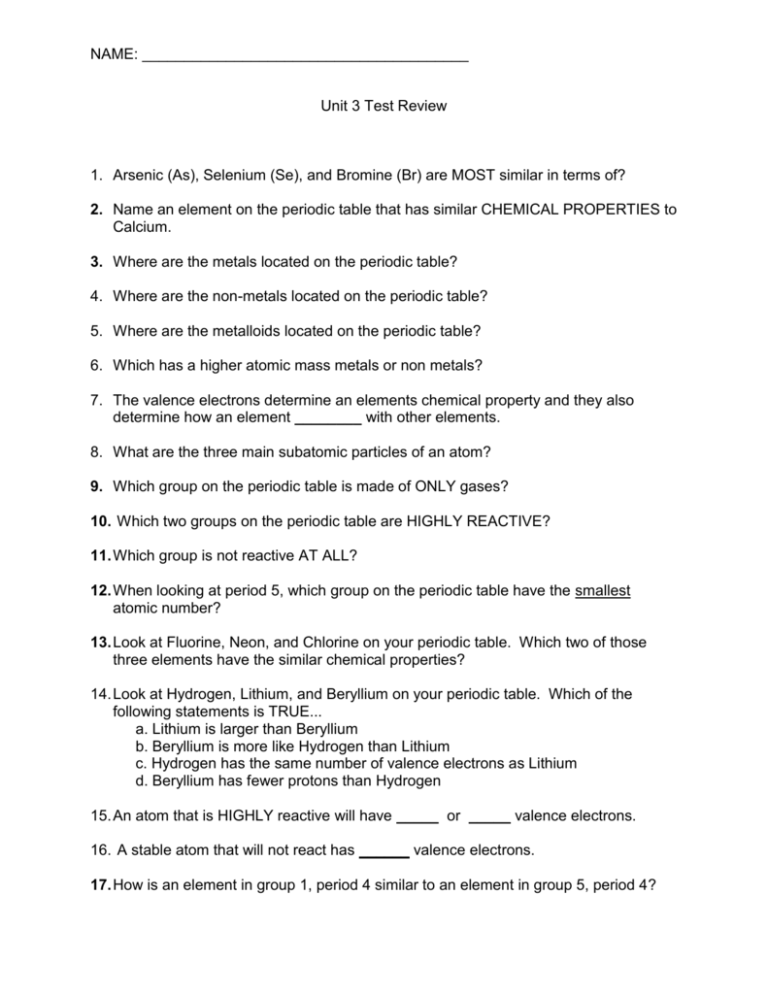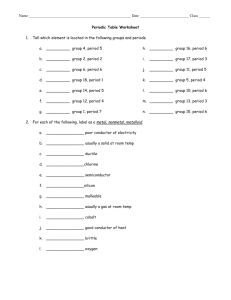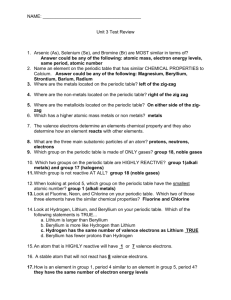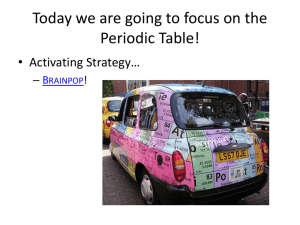Unit 3 Test Review
advertisement

NAME: _______________________________________ Unit 3 Test Review 1. Arsenic (As), Selenium (Se), and Bromine (Br) are MOST similar in terms of? 2. Name an element on the periodic table that has similar CHEMICAL PROPERTIES to Calcium. 3. Where are the metals located on the periodic table? 4. Where are the non-metals located on the periodic table? 5. Where are the metalloids located on the periodic table? 6. Which has a higher atomic mass metals or non metals? 7. The valence electrons determine an elements chemical property and they also determine how an element ________ with other elements. 8. What are the three main subatomic particles of an atom? 9. Which group on the periodic table is made of ONLY gases? 10. Which two groups on the periodic table are HIGHLY REACTIVE? 11. Which group is not reactive AT ALL? 12. When looking at period 5, which group on the periodic table have the smallest atomic number? 13. Look at Fluorine, Neon, and Chlorine on your periodic table. Which two of those three elements have the similar chemical properties? 14. Look at Hydrogen, Lithium, and Beryllium on your periodic table. Which of the following statements is TRUE... a. Lithium is larger than Beryllium b. Beryllium is more like Hydrogen than Lithium c. Hydrogen has the same number of valence electrons as Lithium d. Beryllium has fewer protons than Hydrogen 15. An atom that is HIGHLY reactive will have _____ or _____ valence electrons. 16. A stable atom that will not react has ______ valence electrons. 17. How is an element in group 1, period 4 similar to an element in group 5, period 4? NAME: _______________________________________ 18. Below is an example of a Nitrogen atom. Is it correct? 19. Below you need to draw Sodium, Oxygen, and Lithium. You must show the electron levels, draw the number of electrons, protons, and neutrons. You need to use “+” for protons, “-” for electrons, and “o” for neutrons. 20. How is an element in group 1, period 3 similar to an element in group 1 period 5? 21. Have scientist been researchinbg atoms for a long period of time? Yes or No 22. Who was the scientist that discovered that patterns appeared when elements were arranged in order of increasing atomic mass? 23. Define Metalloid: 24. Define Metal: 25. Define Non-metal: 26. There are ______ number of periods and they go from _____ to _____ on the periodic table. 27. There are ______ number of groups and they go from ______ to ______ on the periodic table. 28. What does the periodic table predict? 29. Elements in the same group have the same number of? 30. Elements in the same period have the same number of?





